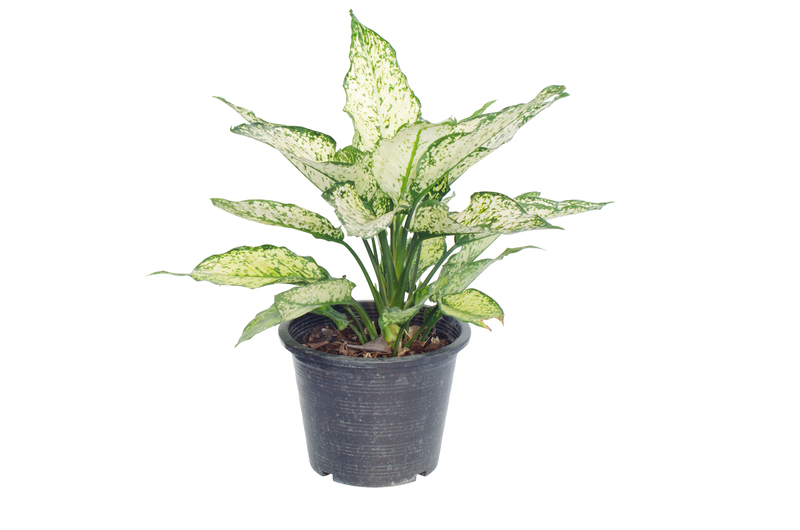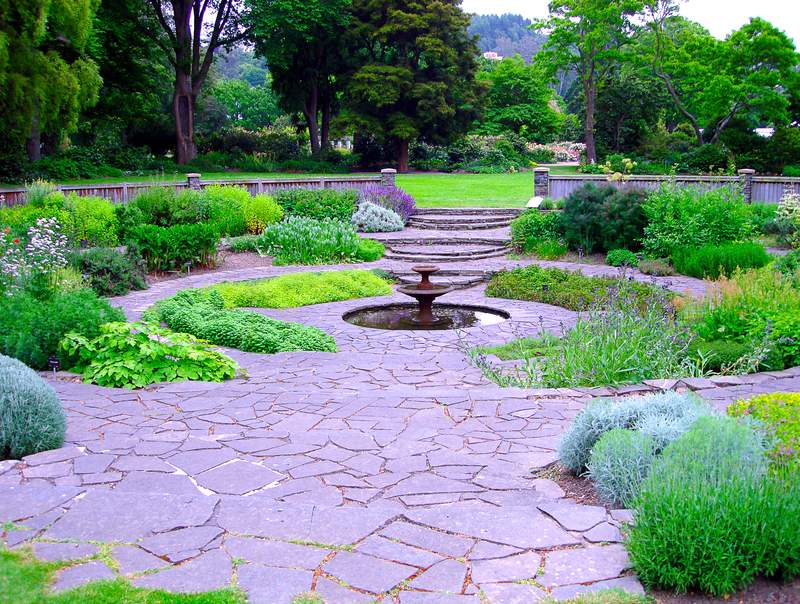Essential Winter Care For Your Beloved Garden Plants
With winter's chilly grasp, garden lovers face a critical challenge: how to ensure that our treasured garden plants survive and thrive through the coldest months. Thoughtful winter care for garden plants is essential for both novice and experienced gardeners. In this comprehensive article, you'll discover vital techniques for preparing, protecting, and nurturing your beloved plants during winter, ensuring a flourishing garden come spring.

Understanding the Challenges of Winter for Garden Plants
Winter brings a fierce cocktail of threats to your garden: frigid temperatures, harsh winds, drying air, fluctuating thaw-freeze cycles, and heavier precipitation, whether snow or rain. Each element can damage roots, stems, and foliage, leaving plants vulnerable to disease, rot, or sudden death.
- Frost: Freezing temperatures can rupture plant cells, leading to wilted, blackened, or mushy plant tissues.
- Wind: Winter winds strip away vital moisture from both soil and plant tissues, resulting in wilt and desiccation.
- Frost Heave: Alternating freeze and thaw cycles can push shallow-rooted plants out of the ground, exposing them to further harm.
- Saturated Soil: Excess precipitation, especially in clay soils, can suffocate roots and promote rot.
Preparing Your Garden for Winter: Essential Steps
1. Know Your Climate and Plant Hardiness Zones
The first step in effective winter care for your garden is understanding your local climate and which plants in your garden are hardy enough to survive winter. Check your plant tags against your region's USDA hardiness zone and research the unique needs of each plant.
2. Inspect and Prune Plants Wisely
Pruning is a double-edged sword in winter preparation. While shaping and removing dead or diseased wood helps, excessive or improper pruning can leave plants vulnerable to frost damage.
- Remove dead, diseased, or pest-ridden limbs.
- Do not prune heavily just before winter - this can stimulate new growth susceptible to cold.
- Wait until late winter or early spring for most major pruning jobs.
3. Clean Up Debris and Fallen Leaves
Garden beds littered with fallen leaves, stems, and fruit can harbor overwintering pests and diseases. It's crucial to rake, remove, and compost healthy debris (avoid composting any diseased material to prevent spread in future seasons).
4. Mulching: Your Plant's Winter Blanket
A thick mulch layer regulates soil temperature and protects roots. It acts as insulation against freeze-and-thaw, reduces soil erosion, and preserves moisture.
- Use straw, shredded leaves, pine needles, bark chips, or compost.
- Apply, after the first hard frost, in a 3-6 inch layer around perennials and shrubs, but keep mulch a few inches from stems to prevent rot.
- For tender plants, mound extra mulch over crowns for added protection.
5. Watering Before Winter
Though growth slows, your garden plants still need water before the ground freezes.
- Deeply water perennials, shrubs, and especially evergreens in late fall when the soil is still warm enough to absorb moisture.
- Evergreens continue to lose water through leaves during winter - moist soil ensures roots can replace lost moisture and resist desiccation.
Winter Protection Techniques for Delicate Garden Plants
1. Covering and Wrapping Plants
For frost-sensitive or tender plants, physical barriers are invaluable:
- Use burlap, horticultural fleece, old sheets, or even overturned buckets to shield vulnerable plants during hard freezes.
- Build wooden frames, then drape lightweight coverings, ensuring the cover doesn't touch foliage directly (which can conduct cold).
- Wrap trunks of young trees (especially fruit trees) with tree wrap material to prevent frost cracks and animal damage.
2. Cloches and Cold Frames
Indispensable in winter plant care, cloches and cold frames help maintain a stable, warmer microclimate for seedlings, annuals, and vegetables.
- Individual cloches can be placed over vulnerable perennials.
- Cold frames extend the growing season for hardy greens and protect cuttings.
3. Anti-desiccant Sprays for Evergreens
Winter air is extremely dry, making evergreens prone to browning and drying out. Anti-desiccant sprays coat foliage in a protective layer to reduce moisture loss.
- Apply spray on a mild, dry day for best results.
- Follow manufacturer's directions regarding frequency and coverage.
Specialized Winter Care for Different Types of Garden Plants
Caring for Perennials in Winter
Many perennials naturally die back in winter, but whether to cut them back or leave them standing is up to you.
- Some seed heads and stems offer winter interest and food for wildlife.
- Wait until late winter to trim back perennials unless they show signs of disease.
- Apply mulch after the top growth has died back but before the ground freezes.
Winter Protection for Shrubs and Trees
Woody plants face their own winter threats, including sunscald, frost cracks, and animal chewing.
- Wrap trunks with tree wrap or spiral guards from the base up to the first branches.
- Shield sensitive shrubs with burlap screens on the windy, sun-exposed side.
- Remove heavy snow gently from branches to prevent breakages; avoid forceful shaking.
Evergreens: The Winter Survivors
While most evergreen shrubs and trees are winter-hardy, they are not immune to problems like browning and leaf drop.
- Apply mulch over the root zone to keep soil temperatures steadier.
- Water deeply before the ground freezes.
- Protect from drying winds with windbreaks, burlap or anti-desiccant sprays.
Tender Bulbs and Dormant Plants
If you garden with tender bulbs (like dahlias, begonias, gladioli) or subtropical ornamentals, overwintering requires more involvement:
- Dig up bulbs after their foliage has yellowed and died back from frost.
- Allow to dry, then store in a cool, dry, frost-free place (like a garage or basement), packed in peat moss or vermiculite.
- Check periodically for rot or shriveling, and keep out of direct sunlight.
Winter Plant Care for Container Gardens
Potted plants are more susceptible to freeze damage, as their roots are exposed to colder temperatures than in-ground plants.
- Group containers in a sheltered location, close to a south-facing wall or under a patio roof.
- Wrap pots with bubble wrap or hessian, or sink them into the ground for added insulation.
- Water sparingly, just enough to prevent dryness, but avoid water-logged soil.
Winter Plant Care: Indoor Preparations
Some houseplants, tropicals, and unhardy garden plants must come indoors for the season.
- Check all plants closely for pests before bringing them inside.
- Gradually acclimate plants to lower light levels indoors to prevent shock.
- Water less frequently in winter, as growth slows, and boost humidity with trays or humidifiers.
Bonus Tips: Encouraging Wildlife and Supporting Pollinators
Want to give back to your garden's ecosystem? Here's how your winter plant care promotes biodiversity:
- Leave some seed heads and ornamental grasses standing to feed birds and support overwintering insects.
- Provide water in an ice-free bird bath.
- Let fallen leaves accumulate in a corner as winter cover for beneficial insects and hedgehogs.
Monitoring Your Garden During Winter Months
Attentive winter care for your beloved garden plants is an ongoing process:
- Regularly check plant covers and mulches, resetting them after storms or strong winds.
- After snowfalls, gently brush heavy snow off evergreens and shrubs.
- Watch for signs of rodent or deer damage and protect plants as needed.
- On mild days, air out cold frames or temporarily remove covers for ventilation.
Signs of Successful Winter Garden Protection
How to know if your winter garden care is working?
- Plants emerge in spring with strong, healthy buds.
- Minimal die-back and prompt new growth from perennials and shrubs.
- Evergreens retain color and foliage through winter.
Common Winter Care Mistakes and How To Avoid Them
- Overwatering: Soggy soil suffocates roots; water only before the ground freezes.
- Late Fertilization: Avoid fertilizing in late fall, as it promotes tender growth prone to frost damage.
- Mulching Too Early: Wait until after the first hard frost before heavy mulching, as early mulching can attract rodents and encourage rot.
- Improper Cover Removal: Remove covers gradually as spring arrives to prevent shocking plants with sudden sun or temperature jumps.
- Ignoring Plant Hardiness: Double-check the hardiness of new garden plants before investing your time and energy.

Essential Winter Care for Garden Plants: Final Thoughts
Proper winter care for your cherished garden plants is the cornerstone of a thriving spring landscape. With mindful preparation--assessing your garden's needs, mulching, watering, pruning, and protecting delicate plants--you can ensure your outdoor haven not only survives, but blossoms brilliantly in the seasons ahead.
Commit to these essential winter plant care strategies today and your beloved garden plants will reward you with vibrant blooms, lush foliage, and abundant life come springtime. Garden wisely, and let winter's chill become an opportunity for nurturing your garden's long-term vitality!
Frequently Asked Questions: Winter Care For Garden Plants
- Q: Is it too late to mulch after the first snowfall?
A: As long as the ground isn't frozen solid, you can still add mulch. Mulching after the first hard frost helps protect plants best. - Q: Should I water my plants in winter?
A: Water deeply only before the ground freezes. During thaw periods, water if there's a winter drought, especially for evergreens and new plantings. - Q: Can I prune shrubs and trees after a hard frost?
A: Wait until late winter for pruning to avoid stimulating growth that could be frost-damaged. - Q: What should I do with potted plants in winter?
A: Group and insulate containers, move to sheltered spots, and watch for excessive dryness or wetness.
Remember: Attentive and well-timed winter care for your favorite garden plants ensures a successful and beautiful spring revival!